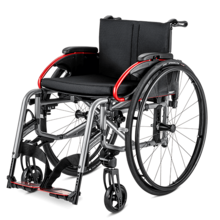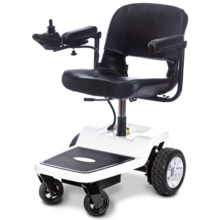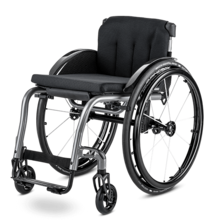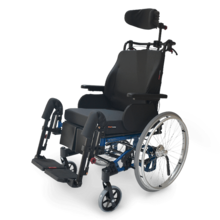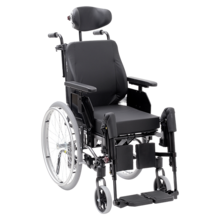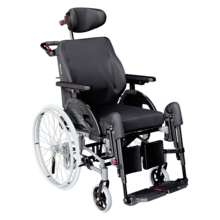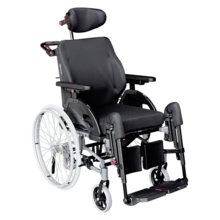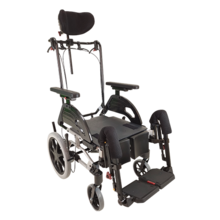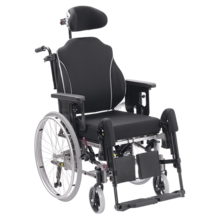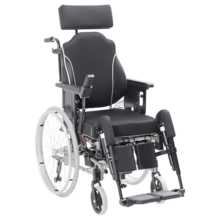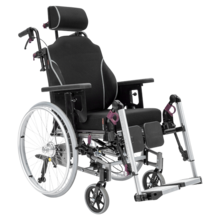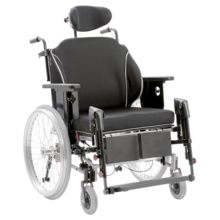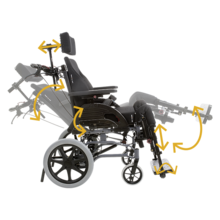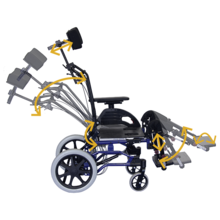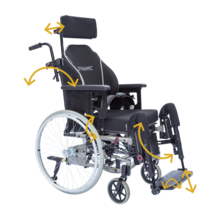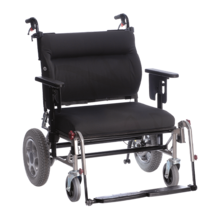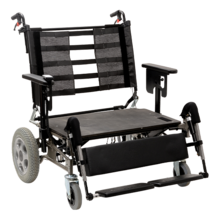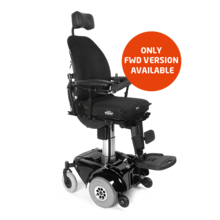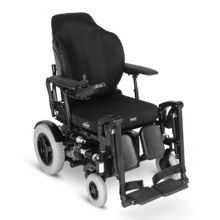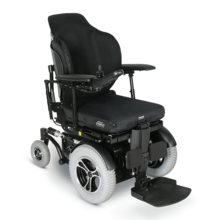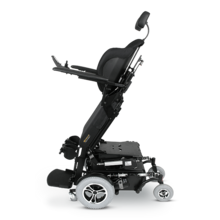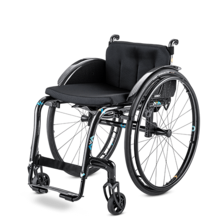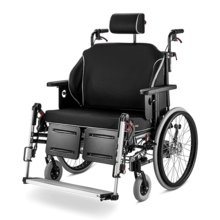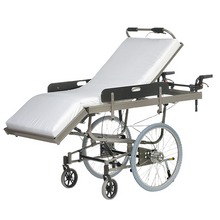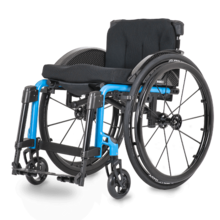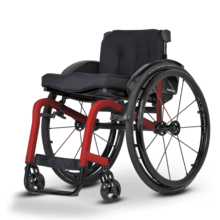Paraplegia
Damage of the spinal cord/backbone at the height of the thoracic or lumbar vertebra. Thereby complete or incomplete paralysis and sensitivity loss in the paralyzed area. As a rule linkedly with bladder and/or rectum incontinence.
The arms are fully functioning.
Wheelchair requirements
- The series must have a comprehensive modular construction system so that the wheelchair can be adapted to the size of the user.
- A good sitting position for stabilisation of the pelvis and the legs must be guaranteed by way of the adaptability of the seat angle and the backrest contour (adaptable backrest)..
- A very good seat cushion for decubitis prevention.
- With initial care, possibly fitting the wheelchair with anti-tilt bars.
- Greatest possible mobility during everyday use by way of wheelbase adjustment of the drive and steering wheels and the lowest possible external dimensions of the wheelbase.
- Equipment for the independent transfer*, e.g. clothing protection or folding hinged side plate, but also mostly a frame with a sloping front end.
- The operating elements should be easy and safe to use for both the user and the accompanying person (e.g. straightforward locking mechanisms).
- The operating elements should be easy and safe to use for both the user and the accompanying person (e.g. straightforward locking mechanisms).

